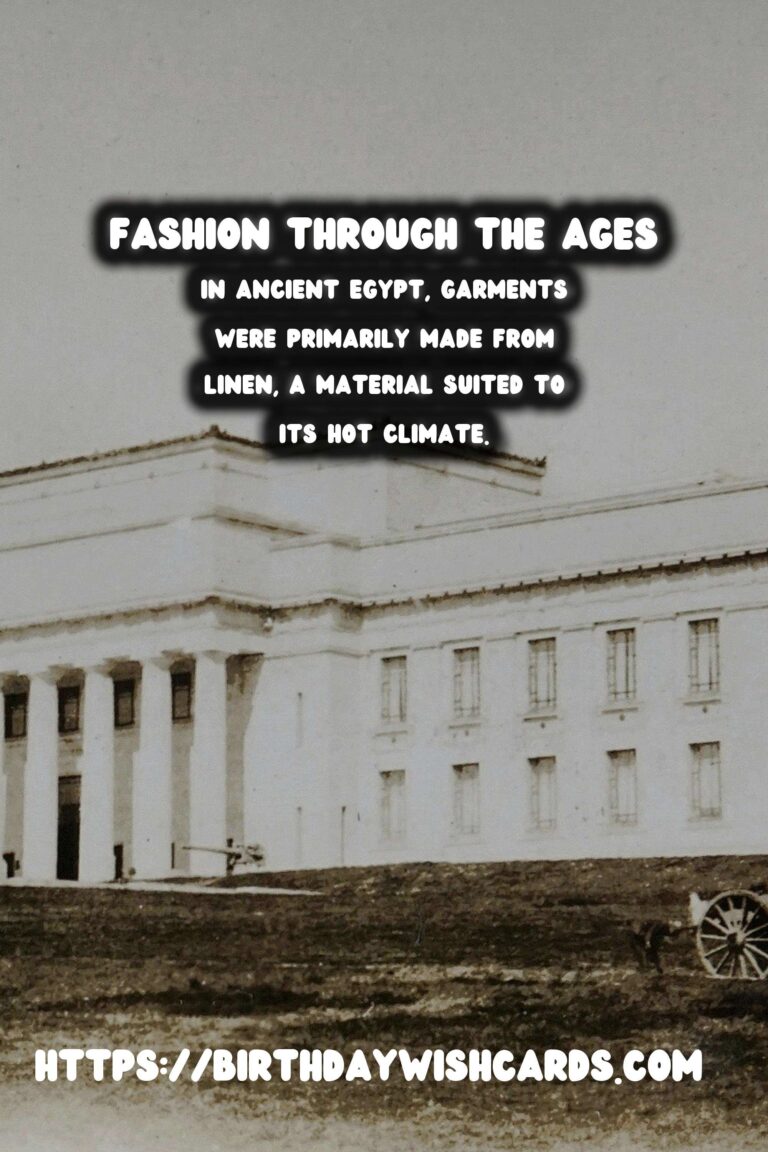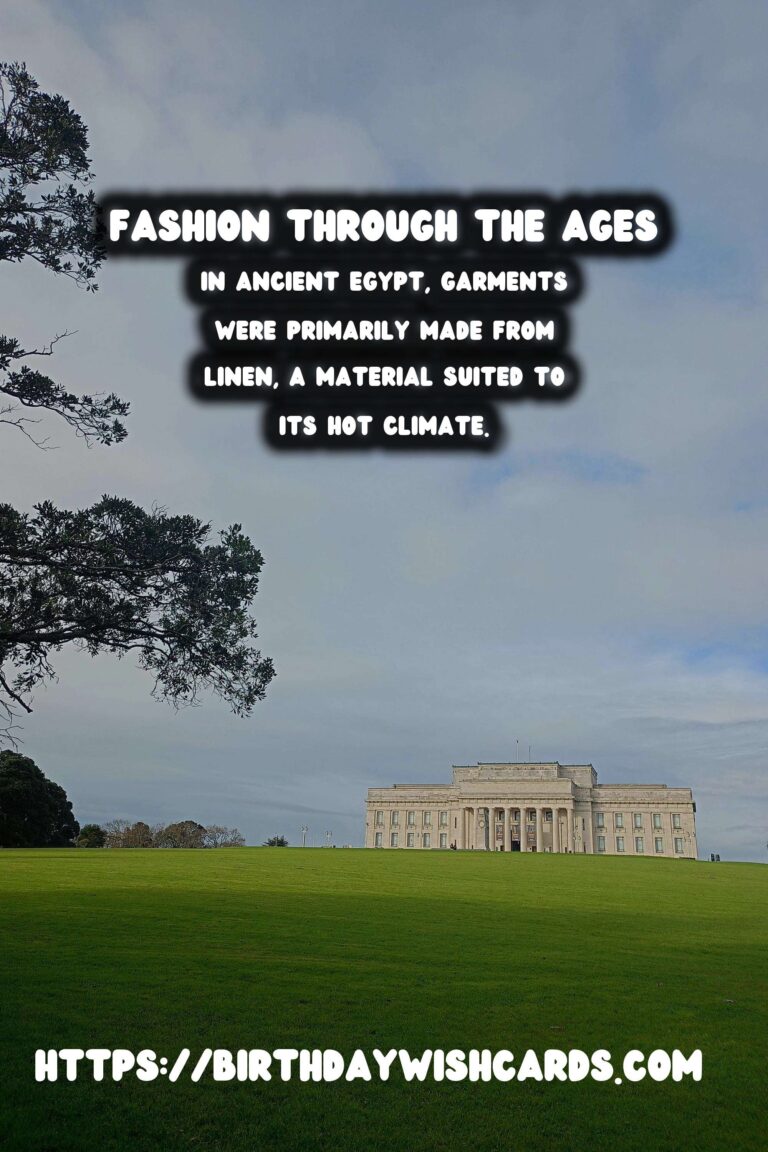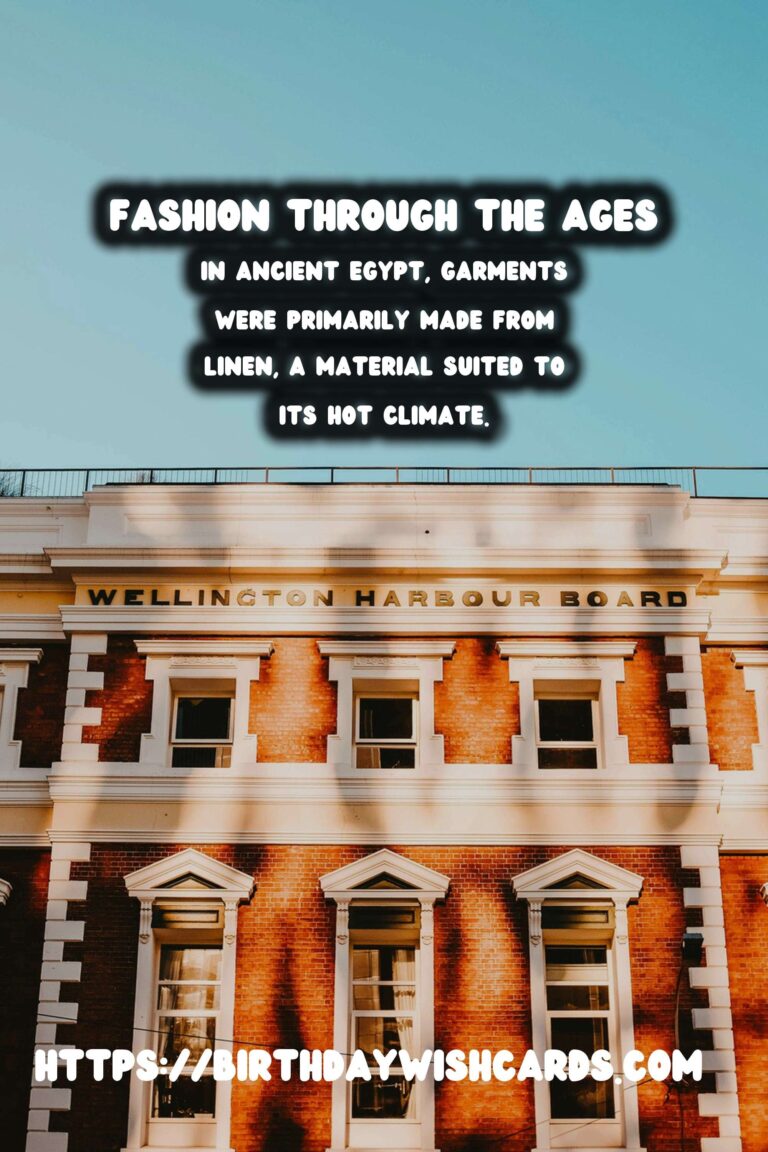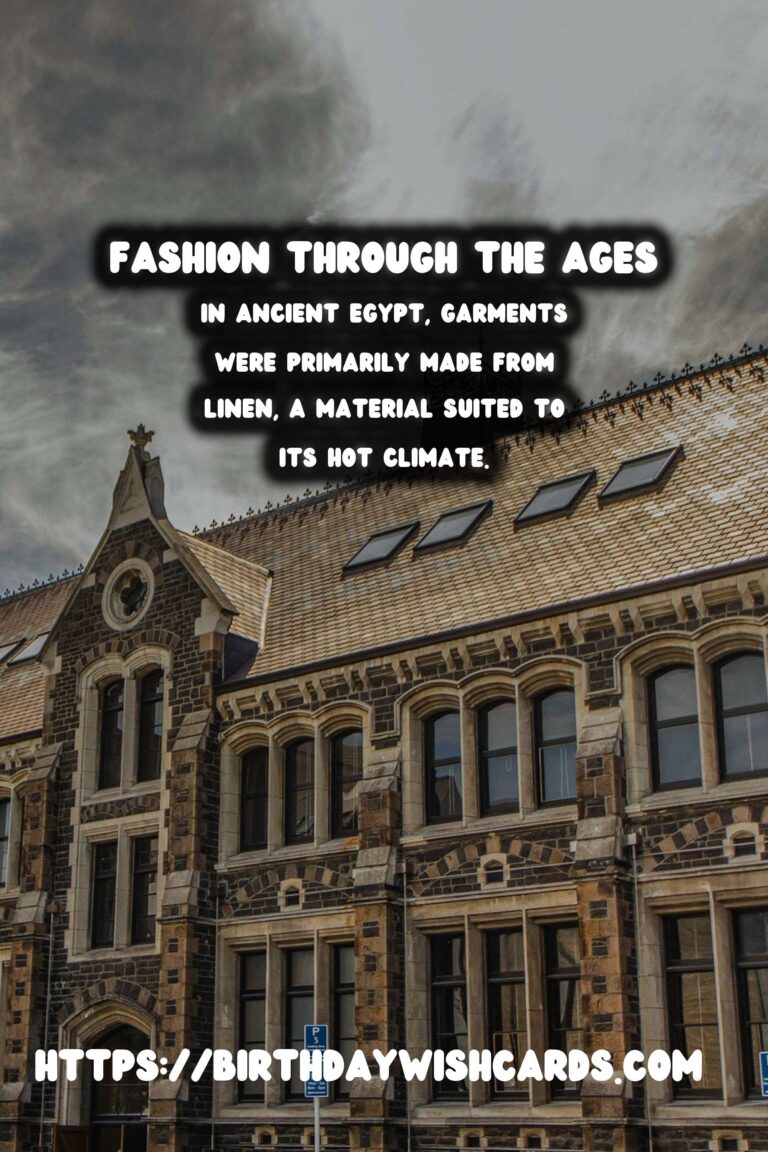
Fashion has always been a significant reflection of the era it belonged to. From the exotic robes of the Pharaohs to the bold styles of the early 20th century, clothing underscores pivotal cultural, social, and political transformations. Understanding fashion through the centuries is much like looking through a window into humanity’s past.
Fashion in Ancient Civilizations
The earliest record of fashion dates back to ancient civilizations. In ancient Egypt, garments were primarily made from linen, a material suited to its hot climate. Both men and women wore simple tunics and kilts, adorning themselves with jewelry made from gold and semi-precious stones to reflect their social status.
In Mesopotamia, fashion was heavily influenced by practical needs. Wool and flax were commonly used to create garments that could accommodate the region’s varying temperatures. Trousers and tunics were standard among both genders, accompanied by intricate patterns and designs.
The Medieval Era: Layers and Sumptuary Laws
Moving into the medieval period, fashion began to signify wealth and societal position more distinctly. The introduction of laws such as the English Sumptuary Laws determined which fabrics and colors could be worn based on class. Nobles flaunted their status with luxurious silk, velvet, and fur, while peasants were restricted to wool and linen.
Women wore flowing gowns with fitted bodices, often layered with chemises and cloaks. Men’s fashion included tunics, breeches, and surcoats. The use of rich colors and elaborate designs was explicit among the upper classes.
The Renaissance: Rebirth of Fashion
The Renaissance marked a period of innovation and ostentatious style transformation. The revival of art and culture was mirrored in fashion with increasingly complex designs and fearless use of color.
Men wore doublets and hose, frequently accessorizing with hats and capes. Women favored gowns with exaggerated silhouettes created through the use of structured corsets and wide, voluminous skirts. Embroidery and lace became staples in high society’s wardrobe.
18th and 19th Centuries: Revolution and Romanticism
The 18th century propelled fashion forward with the prevalence of the European Enlightenment and the American Revolution. In England and France, the styles of aristocrats became more pronounced with the use of extravagant wigs, and finely tailored coats and waistcoats for men, and panniers and corsets for women.
In the 19th century, fashion was an amalgam of various influences: the romanticism of the early 1800s softened lines and fabrics, whereas the industrial revolution of the late 1800s introduced mass production that made fashion more accessible.
20th Century: The World Wars and Their Impact
The early 20th century witnessed drastic transformations due to the world wars. World War I emphasized practical and simple fashion, leading to shorter hemlines and less restrictive outfits for women, while men’s fashion saw military influences with trench coats and khaki fabrics.
After World War II, fashion split into various streams. The New Look by Christian Dior redefined women’s fashion with its emphasis on femininity and elegance, while men’s suits took on a more practical yet sophisticated silhouette.
Each of these epochs reveals much about the societies and cultures they belonged to, illustrating how fashion both influenced and was influenced by the world.
Fashion has always been a significant reflection of the era it belonged to. In ancient Egypt, garments were primarily made from linen, a material suited to its hot climate. 









#HistoricalFashion #FashionThroughHistory




